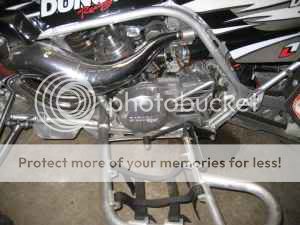Just thought I would do the intro thing here. I have been riding motorcycles since 1978 and as a professional mech. for 5 years back in the '80's. Currently I do custom Yamaha SR500/400 parts and send them all over the world. Awhile back, I did some swapping around and acquired a couple pocketbikes. One was a real pos chopper looking thing with a pair of rear tires and the other is, I believe, a Cag. So, I stripped the chopper looking one for any decent parts and scrapped the rest. Recently, I have been thinking of getting all this stuff out of the box and build it back up. Here is a pic of the frame that I found here if anyone can tell me more about what it is. Just trying to learn about stuff that is pocketbike specific and how any of my knowledge of full size bikes translates to pocketbikes. Thanks for any info you can pass on about this frame and any related aspects.
![Image]()





















